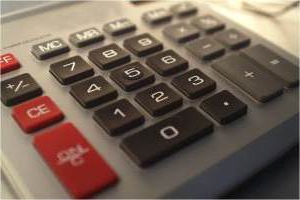Profitability indicators reflect to a certain extent the economic efficiency of the company. On them you can determine the rationality of the use of cash, labor, material and other resources. The calculation of the level of profitability is the ratio of income to assets or the flows forming it. Let us further consider this category in more detail. 
Return on sales
This ratio illustrates the share of income for each ruble earned. As a rule, it is defined as the ratio of net profit (after tax) for a specific period to the volume of sales, expressed in cash over the same time. This coefficient acts as an indicator. pricing policy organization, reflects its ability to control costs. Product assortment and competitive strategies are considered the main categories that affect the level of profitability. The formula for determining it is as follows:
Pn = Chn / V,
where Pn is the desired coefficient;
PP - net income;
In - revenue.
Determining the effectiveness of implementation is often used in assessing the operational performance of a firm. In addition to the above, there are other ways by which you can determine the level of profitability. However, regardless of the method, the calculations use only data on the company's losses / income. For example:
- RP EBIT - the amount of income from sales before taxes and interest from each ruble of revenue.
- Pn net profit. When calculating, the income per ruble of sales proceeds is used.
- RP / RUB (invested in production and marketing).
In the course of the analysis of financial statements, the level of profitability of the implementation is used to assess the effectiveness of work and pricing processes.
Accepted Designations
Sales efficiency is calculated as the ratio of net income to net (revenue) from all types of sales. ROS is commonly used in formulas. The following definitions are considered synonymous with this concept:
- Net income ratio.
- Product profitability level.
- Specific net income.
- Return on turnover.
- Profitability of goods sold and so on.
The coefficient is determined as follows:
ROS = N1 \ NS x 100%,
where NI - net income (rubles);
NS - net (revenue) from all types of sales (rubles). 
Appointment
The level of profitability of sales reflects the effectiveness of the business and operating activities of the company, illustrates the volume of net income from the ruble of sales. In other words, the value indicates the amount of funds that remain after covering the cost of goods, taxes and credit interest. This ratio reflects the level of profitability of the company in the sale of products on the market. It also allows you to determine the share of cost in sales.
Important point
It should be noted that for equal revenue, pre-tax profit and costs for two different companies, the profitability of sales can have significant differences. The difference is affected by the amount of interest on the amount of net income. The level of profitability of sales is determined by the performance in the reporting period. The ratio does not reflect the planned and probable effect of long-term investments. For example, when a company moves to new promising categories of goods or technologies that require significant funding, sales performance may temporarily decrease.However, if the company has chosen the right strategy, there will subsequently be an increase in the level of profitability, since the expenses incurred will pay off in a reasonable time. In this regard, the decrease in values in the reporting period cannot be regarded as insufficient efficiency of the company.
Example
In 2014, revenue from the sale of the company amounted to 1.12 million dollars, in the next year it grew to 1.31 million. Net income in 2014 - 297 thousand dollars, and in 2015 - 308. Let’s determine how much the level of profitability has changed. The formula will be as follows:
For 2014: ROS = 297/1120 = 0.2652 (26.52%).
For 2015: ROS = 308/1310 = 0.2351 (23.51%).
Changes are defined as follows:
23,51 - 26,52 = -3,01 %.
Thus, in 2015, the level of profitability decreased by 3.01%. 
Designations of different coefficients
As mentioned above, the level of profitability of an enterprise illustrates the efficiency of using financial, labor, material and other resources. In most publications, this concept is interpreted as a profitable, relative coefficient of economic performance. The very word "profitability" came from the Germans. The category under consideration acts as a key numerical characteristic. In economic circles, the following designations of profitability are used:
- ROFA (fixed assets).
- ROM (products).
- ROL (staff).
- ROS (sales).
- ROA (assets).
- ROIC (permanent (invested) capital).
- BEP (basic return on assets).
- ROE (equity).
The following formulas are also used:
- ROM = PP / cost x 100%.
- ROFA = Chp / OS x 100%.
- ROS = profit from sales / revenue x 100%.
- ROA = Op / A x 100%.
- BEP = EBIT / A x 100%.
- ROL = PP / headcount x 100%.
- ROE = NW / SK x 100%.
Chp - net profit;
Sk - equity;
A - assets;
OS - fixed assets;
Op - operating profit. 
The effectiveness of the company
The level of profitability of production reflects the effectiveness of the use of fixed assets. This ratio is defined as the ratio of income to the average value of current and fixed assets. The profitability of the company and the profit that it receives are closely related to each other. Income acts as a specific economic category, which expresses industrial and economic relations arising regarding the formation and further use of products. In the real sector, income takes on a material form and represents cash, benefits, funds, resources. If a company makes any profit, then it is considered profitable. The values used to determine the coefficient reflect relative returns.
Assessment of financial stability
It is based on the analysis of absolute and relative values. The first allows you to track the dynamics of income for specific periods. To obtain more reliable results, the calculations are carried out taking into account inflation. Relative values are presented in the form of options for the ratio of income and capital that was invested in the process. In this regard, they are less prone to inflationary effects.
It is worth saying that the absolute value of profit does not always allow you to get the correct idea of the profitability of a particular company. This is due to the fact that, among other things, it affects the scale of the company and the quality of its work. To obtain a more accurate result, a relative value is therefore used. In her quality, in particular, is the level of profitability. Consideration of the values is necessary in comparison with other periods. This will allow you to draw the right conclusions regarding the dynamics of the development of the company. 
Key Features
The company's profitability level reflects the degree of loss-making and profitability. Values characterize the results of financial development and work efficiency. They express relative returns, expressed as a percentage of capital expenditures from various positions.The most important characteristics of the actual environment within which income and revenue are generated are profitability values. They are used in a comparative analysis of financial well-being. The main elements used in the assessment are profitability of products capital and its general significance. Let's consider them in more detail.
Characterization of elements
Return on equity reflects the efficient use of the property held by the company. Product profitability is expressed in terms of revenue per unit of product sold. It can increase with an increase in the price of products, provided that operating expenses remain unchanged or output costs decrease while maintaining a constant selling price. The total value of profitability is expressed in relation to the balance of revenues to the average amount of fixed assets and working normalized assets.
This coefficient determines the profitability of the company. In other words, overall profitability reflecting an increase in capital is equal to the revenue generated before interest, multiplied by 100% and divided by assets. This value is considered key in the analysis of profitability. A more accurate definition of the indicator is carried out by calculating profitability. volume of production and the number of asset turns. The first element is the dependence of gross income on expenditures. The amount of capital turnover is the ratio of profit to the value of assets. 
Income
In market conditions, profit is considered the main characteristic of the effectiveness of the company. This is due to the fact that it concentrates all losses, expenses and incomes, and also summarizes the results obtained in the process of managing. Profit is determined by profitability, the efficiency of enterprises and their groups is investigated. Revenue acts as one of the main sources of stimulation of social and commercial development, labor, increase in the volume of company property, own assets and so on. Profit analysis is carried out for the company as a whole, its self-supporting units, industries (procurement, catering, trade, transport, etc.). When evaluating, the execution of the plan and the dynamics of revenue are studied, the influence of various factors on its value changes. In addition, reserves for increasing net profit are identified, researched and implemented.
Influence factors
Revenue from the sale of goods depends on various circumstances. Among their changes:
- The average value of distribution costs.
- The volume of product turnover.
- The average gross income that trading companies have at their disposal.
The impact of changes in the volume of goods turnover is measured when it deviates from the planned indicators. They can also be determined by multiplying in dynamics by the basic coefficient of profit from the sale of products as a percentage of turnover (actually for the previous period or according to plan). The resulting value should be divided by 100. The impact of changes in the average value of gross income and distribution costs is established by multiplying the actual turnover of goods for the reporting period by deviations from the planned ones or in dynamics for them.
The result is divided by one hundred. Retained earnings in addition, it is influenced by changes in the values of income and losses from other sales, non-operating expenses, and losses. Their impact is determined by direct calculus. Selling profit is obtained by subtracting from the total gross income tax and other mandatory payments that are levied on the basis of realized premiums on trade, as well as distribution costs. 
Non-operating income, expenses and losses
Many of the indicators that affect the financial results are the result of certain shortcomings in the work. This must be taken into account during the analysis.The assessment of non-operating income, losses and expenses is carried out on the basis of form No. 2 “Report on losses and profits” and the data of their analytical accounting. Close attention in the assessment should be given to the reasons for the formation of non-operating losses and expenses and to develop measures to prevent them.
Forfeits, penalties and fines received at the end and beginning of the year exceed the amounts paid. But the growth rate of these deductions is significantly higher than that of revenues. The fines listed by suppliers, customers and other legal entities indicate violations of contractual discipline by them. In this regard, these revenues should not be regarded as positive. As income, one should evaluate a significant increase in dividends on securities, revenue on bonds owned by the company, profits from leased property, and exchange rate differences on transactions and accounts with foreign currency.








